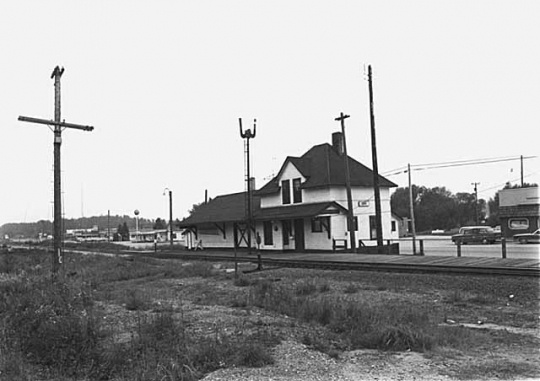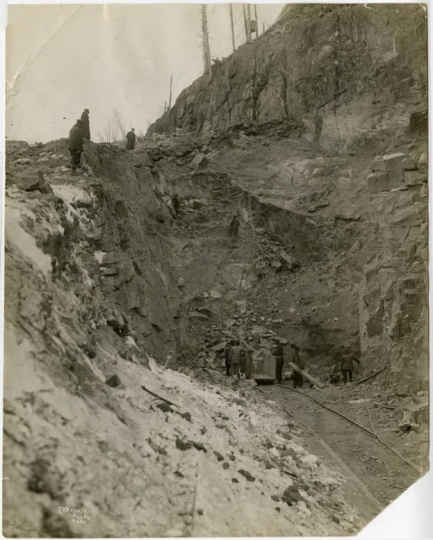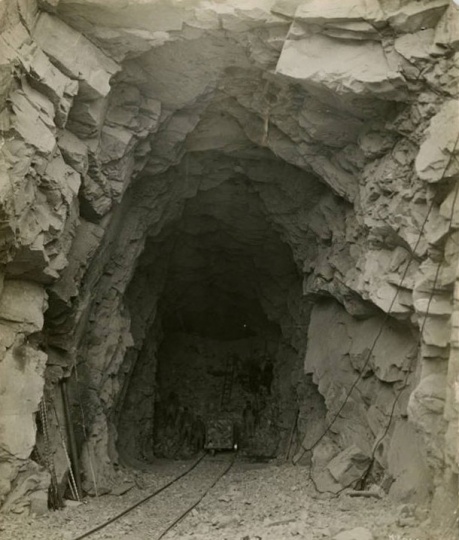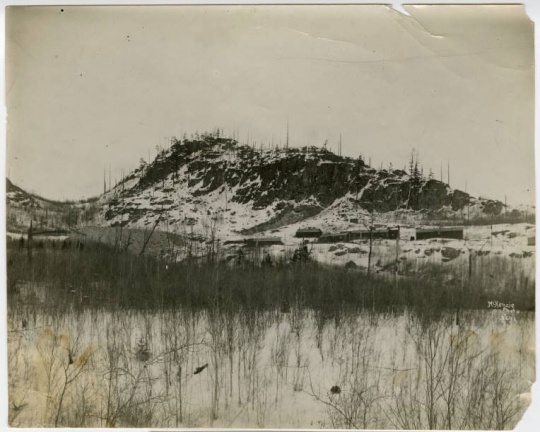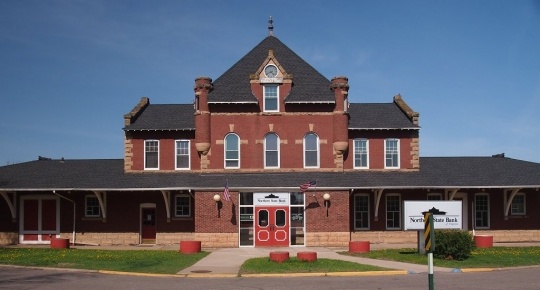The Duluth, Winnipeg and Pacific Railway (DW&P) was a Minnesota railroad that operated between International Falls and Duluth. It connected to the Canadian National at International Falls and to the Northern Pacific at Duluth. As a subsidiary of the Canadian National for almost all of the twentieth century, it moved freight along an artery between the Canadian West and the American Midwest through Minnesota.
The DW&P began in humble fashion, serving a sawmill and the lumber industry near Virginia. Construction of the line, first known as the Duluth, Virginia and Rainy Lake Railway, began at Virginia in 1901. The nascent railroad sought to provide service to its three namesake cities as well as to handle lumber as its main commodity for shipment out of Duluth.
The Canadian Northern Railway (CN) bought the line and renamed it the Duluth, Rainy Lake and Winnipeg (DRL&W) before absorbing it on January 1, 1913. The CN became part of the Canadian national system, put in place because of that carrier’s bankruptcy during the financially difficult years of World War I.
Construction on the DRL&W reached Ranier to the north in 1908, when the first passenger train crossed the Rainy River bridge into Fort Frances, Ontario. At Fort Frances, workers built a crucial interchange with the CN on its own line between Winnipeg, Manitoba and Port Arthur, Ontario. In 1909, the CN subsequently incorporated the line as the Duluth, Winnipeg and Pacific (DW&P).
Construction continued to the south as far as Duluth, where rails were laid in 1912. Several interchanges were set up with other railroads, such as with the Northern Pacific at Duluth. The DW&P was thus in place as a small Minnesota railroad stretching 167 miles between International Falls and Duluth. It followed this route for the remainder of the twentieth century as a Minnesota short line. The DW&P continued to grow and develop until it was a vital link in the Canadian National system.
Well over 800 million ton-miles of revenue freight moved annually from western Canada over the DW&P to the states of the American Midwest and the connecting railroads of the Great Lakes region. Workers improved the line to accommodate an increase in freight traffic. The railroad also added more unit trains—trains that carry a single commodity directly to a destination. Many of the line’s unit trains transported commodities that were especially important to the region, such as potash, lumber, and paper products.
In 1970, the DW&P hauled 792 million ton-miles of revenue freight with no passenger service. It operated over a total line length of 170 miles. Counting sidings and yards, the railroad covered 232 miles of track. The DW&P’s subsidiary arrangement with the CN was also in place for the Michigan-based Grand Trunk Western.
When the CN system was privatized in 1995, the DW&P changed dramatically. In the 1990s, the free trade agreements of NAFTA increased the volume of freight moving between Canada and the United States through Minnesota. This increase in traffic raised the profile of the DW&P as part of CN’s freight artery to Chicago and its connection to other railroads available at that city.
CN reached agreements in the 1990s with competitor Wisconsin Central to haul freight between Canada and Chicago. These trains passed over the DW&P on their way to the markets of the American Midwest.
The 1990s brought about a final change to the DW&P when its identity as a carrier was dissolved gradually, starting in 1993. Equipment was repainted, and further changes were implemented during the privatization process.
The DW&P lingered on in name only—then officially disappeared into the CN system in 2011. In 2016, most of the original DW&P line remains in place and is operated as a part of the CN, with the busy main line connecting the western provinces to Chicago by way of Minnesota.







